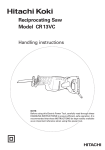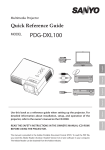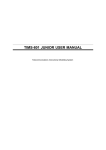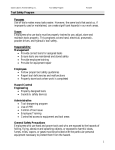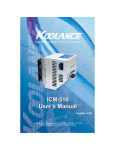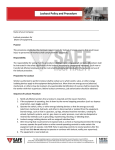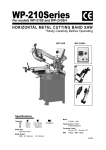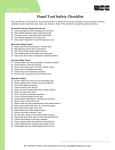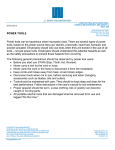Download Everyone Goes Home “SAFE”! - Gulf Coast Safety Council
Transcript
Everyone Goes Home “SAFE”! Hand Power Tool Use Hand Power Tools are a common part of our everyday lives and are present in nearly every industry. These tools help us to easily perform tasks that otherwise would be difficult or impossible. However, these simple tools can be hazardous and have the potential for causing severe injuries when used or maintained improperly. Special attention toward Hand Power Tool safety is necessary in order to reduce or eliminate these hazards. Employees who use hand and power tools and are exposed to the hazards of falling, flying, abrasive, and splashing objects, or to harmful dusts, fumes, mists, vapors, or gases must be provided with the appropriate personal protective equipment. All electrical connections for these tools must be suitable for the type of tool and the working conditions (wet, dusty, flammable vapors). When a temporary power source is used for construction a ground-fault circuit interrupter should be used. Employees should be trained in the proper use of all tools. Workers should be able to recognize the hazards associated with the different types of tools and the safety precautions necessary. Five basic safety rules can help prevent hazards associated with the use of hand and power tools: Keep all tools in good condition with regular maintenance. Use the right tool for the job. Examine each tool for damage before use and do not use damaged tools. Operate tools according to the manufacturers' instructions. Provide and use properly the right personal protective equipment. Employees and employers should work together to establish safe working procedures. If a hazardous situation is encountered, it should be brought immediately to the attention of the proper individual for hazard abatement. . Workplace floors shall be kept as clean and dry as possible to prevent accidental slips with or around dangerous hand tools. Power tools must be fitted with guards and safety switches; they are extremely hazardous when used improperly. The types of power tools are determined by their power source: electric, pneumatic, liquid fuel, hydraulic, and powder-actuated. Everyone Goes Home “SAFE”! To prevent hazards associated with the use of power tools, workers should observe the following general precautions: Never carry a tool by the cord or hose. Never yank the cord or the hose to disconnect it from the receptacle. Keep cords and hoses away from heat, oil, and sharp edges. Disconnect tools when not using them, before servicing and cleaning them, and when changing accessories such as blades, bits, and cutters. Keep all people not involved with the work at a safe distance from the work area. Secure work with clamps or a vise, freeing both hands to operate the tool. Avoid accidental starting. Do not hold fingers on the switch button while carrying a pluggedin tool. Maintain tools with care; keep them sharp and clean for best performance. Follow instructions in the user's manual for lubricating and changing accessories. Be sure to keep good footing and maintain good balance when operating power tools. Wear proper apparel for the task. Loose clothing, ties, or jewelry can become caught in moving parts. Remove all damaged portable electric tools from use and tag them: "Do Not Use." The exposed moving parts of power tools need to be safeguarded. Belts, gears, shafts, pulleys, sprockets, spindles, drums, flywheels, chains, or other reciprocating, rotating, or moving parts of equipment must be guarded. Machine guards, as appropriate, must be provided to protect the operator and others from the following: Point of operation. In-running nip points. Rotating parts. Flying chips and sparks. Safety guards must “NEVER” be removed when a tool is being used.


